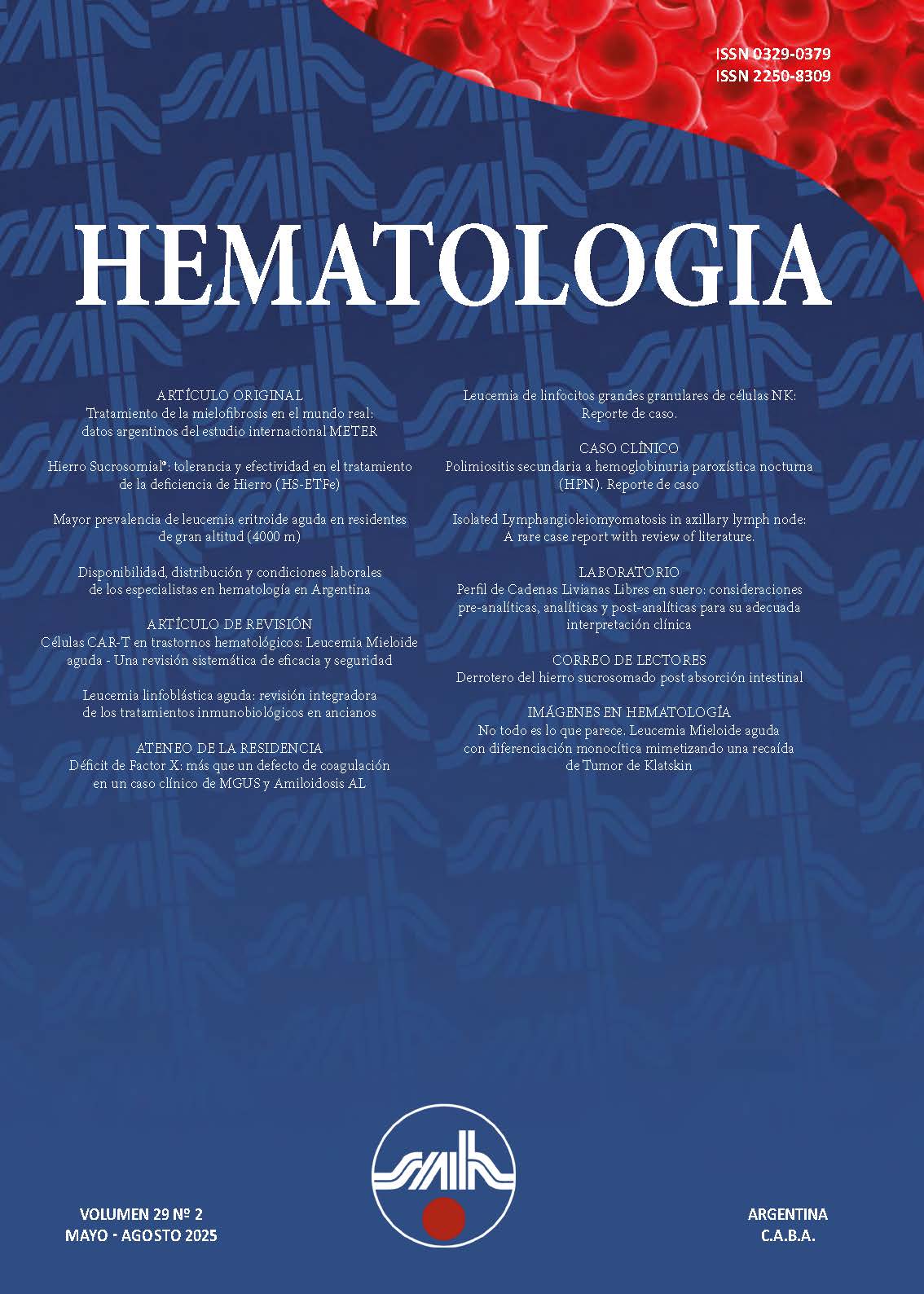Abstract
Background: Lymphangioleiomyomatosis (LAM) is a rare low grade metastatic tumour spreading through lymphatic vessels. On histology, it shows proliferation of smooth musclelike or epitheliod tumour cells in the lungs or axial lymphatic system. Extrapulmonary LAM is rare. Case presentation: We report a case of a 23-yearold male who presented with generalised lymphadenopathy and skin lesions since one month. The patient had no history of pulmonary LAM, tuberous sclerosis complex or renal angiomyolipoma. The biopsy from the skin nodule performed outside, was reported as Mycosis fungoides with large cell transformation. The biopsy from the axillary lymph node showed an encapsulated nodal tissue with numerous follicles of varying sizes, both primary and secondary follicles. Some of the follicles showed spindle cell proliferation and increased plasma cells in the germinal centres. Prominence of vasculature is also noted. Subcapsular spindle cell proliferation with areas of myxoid degeneration is also noted. On immunohistochemistry, these spindle cells were positive for S100, SMA, and HMB45 and negative for Pan- CK , MDM2, Melan A, Desmin and Beta catenin. D 240 highlighted the lymphatic channels. The patient was treated with chemotherapy. Conclusion: The diagnosis was challenging in this case, as it is rare pathology, less commonly seen in men, and even more, with a history of skin nodules and no history suggestive of pulmonary LAM or other causes of LAM. With spindle cell proliferation in lymph nodes, LAM should always be had in mind and the appropriate immunohistochemistry will help in arriving at the final diagnosis.
References
McCarthy C, Gupta N, Johnson SR Yu JJ, McCormack FX. Lymphangioleiomyomatosis: pathogenesis, clinical features, diagnosis, and management. Lancet Respir Med. 2021; 9:1313–27.
McCormack FX, Gupta N, Finlay GR, Young LR, Taveira-DaSilva AM, Glasgow CG, et al. Official American Thoracic Society/Japanese Respiratory Society Clinical Practice Guidelines: lymphangioleiomyomatosis diagnosis and management. Am J Respir Crit Care Med. 2016; 194:748–61.
Ryu JH, Moss J, Beck GJ, Lee JC, Brown KK, Chapman JT, et al. The NHLBI lymphangioleiomyomatosis registry: characteristics of 230 patients at enrollment. Am J Respir Crit Care Med. 2006; 173:105–11.
Xiao S, Chen Y, Tang Q, Xu L, Zhao L, Wang Z et al. (2022) Pelvic Lymph
Node Lymphangiomyomatosis Found During Surgery for Gynecological
Fallopian Tube Cancer: A Case Report and Literature Review. Front. Med. 2022; 9:917628.
Rabban JT, Firetag B, Sangoi AR, Post MD, Zaloudek CJ. Incidental pelvic and para-aortic lymph node lymphangioleiomyomatosis detected during surgical staging of pelvic cancer in women without symptomatic pulmonary lymphangioleiomyomatosis or tuberous sclerosis complex. Am J Surg Pathol. 2015; 39:1015–25.
Ferrans VJ, Yu ZX, Nelson WK, Valencia JC, Tatsuguchi A, Avila NA et al. Lymphangioleiomyomatosis (LAM): a review of clinical and morphological features. J Nippon Med Sch. 2000; 67:311-29.
Schoolmeester JK, Park KJ. Incidental nodal lymphangioleiomyomatosis is not a harbinger of pulmonary lymphangioleiomyomatosis: a study of 19 cases with evaluation of diagnostic immunohistochemistry.Am J Surg Pathol. 2015; 39:1404–10.
Matsui K, Tatsuguchi A, Valencia J, Yu ZX, Bechtle J, Beasley MB, et al. Extrapulmonary lymphangioleiomyomatosis (LAM): clinicopathologic features in 22 cases. Hum Pathol. 2000; 31:1242–8
All material published in the journal HEMATOLOGÍA (electronic and print version) is transferred to the Argentinean Society of Hematology. In accordance with the copyright Act (Act 11 723), a copyright transfer form will be sent to the authors of approved works, which has to be signed by all the authors before its publication. Authors should keep a copy of the original since the journal is not responsible for damages or losses of the material that was submitted. Authors should send an electronic version to the email: revista@sah.org.ar





